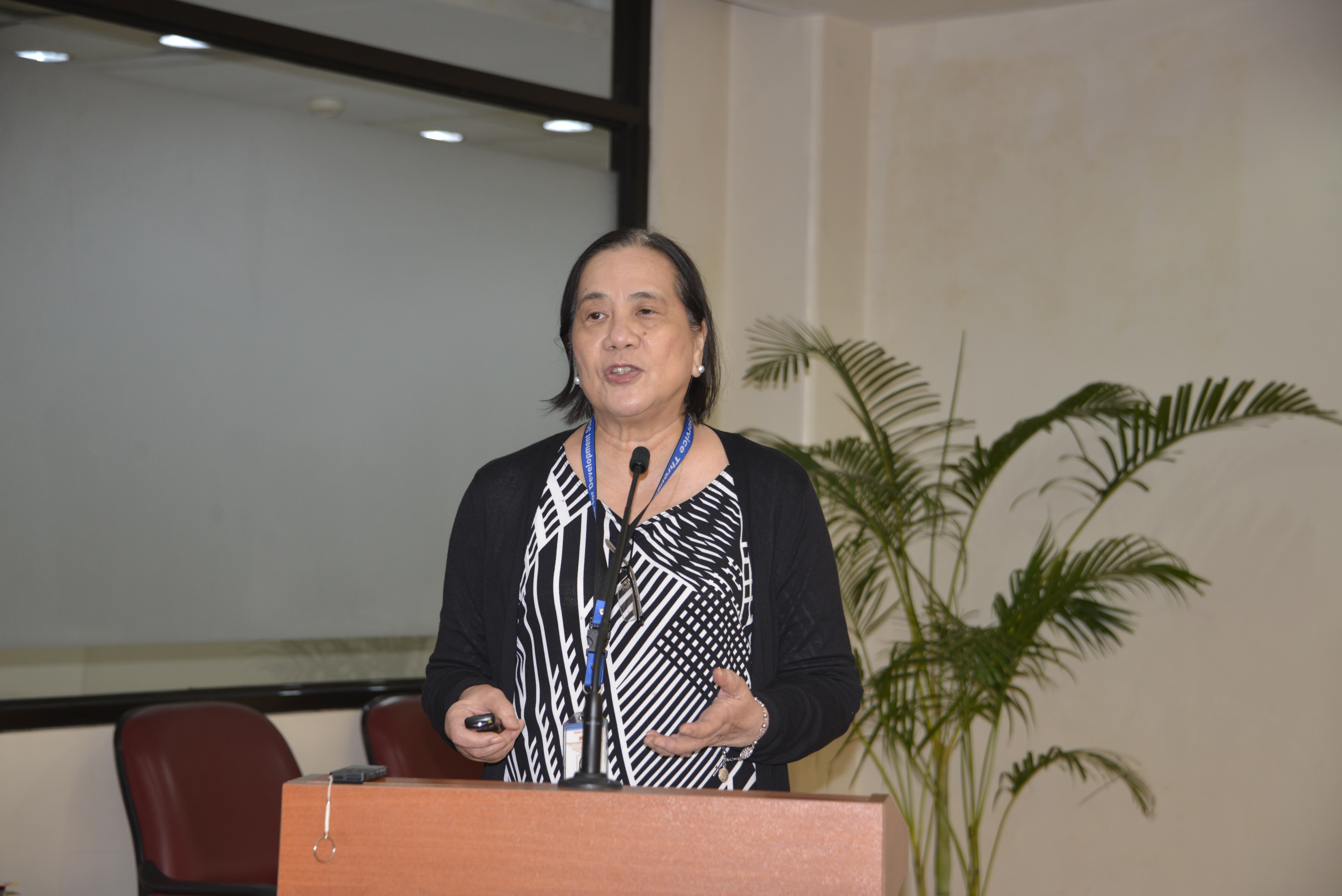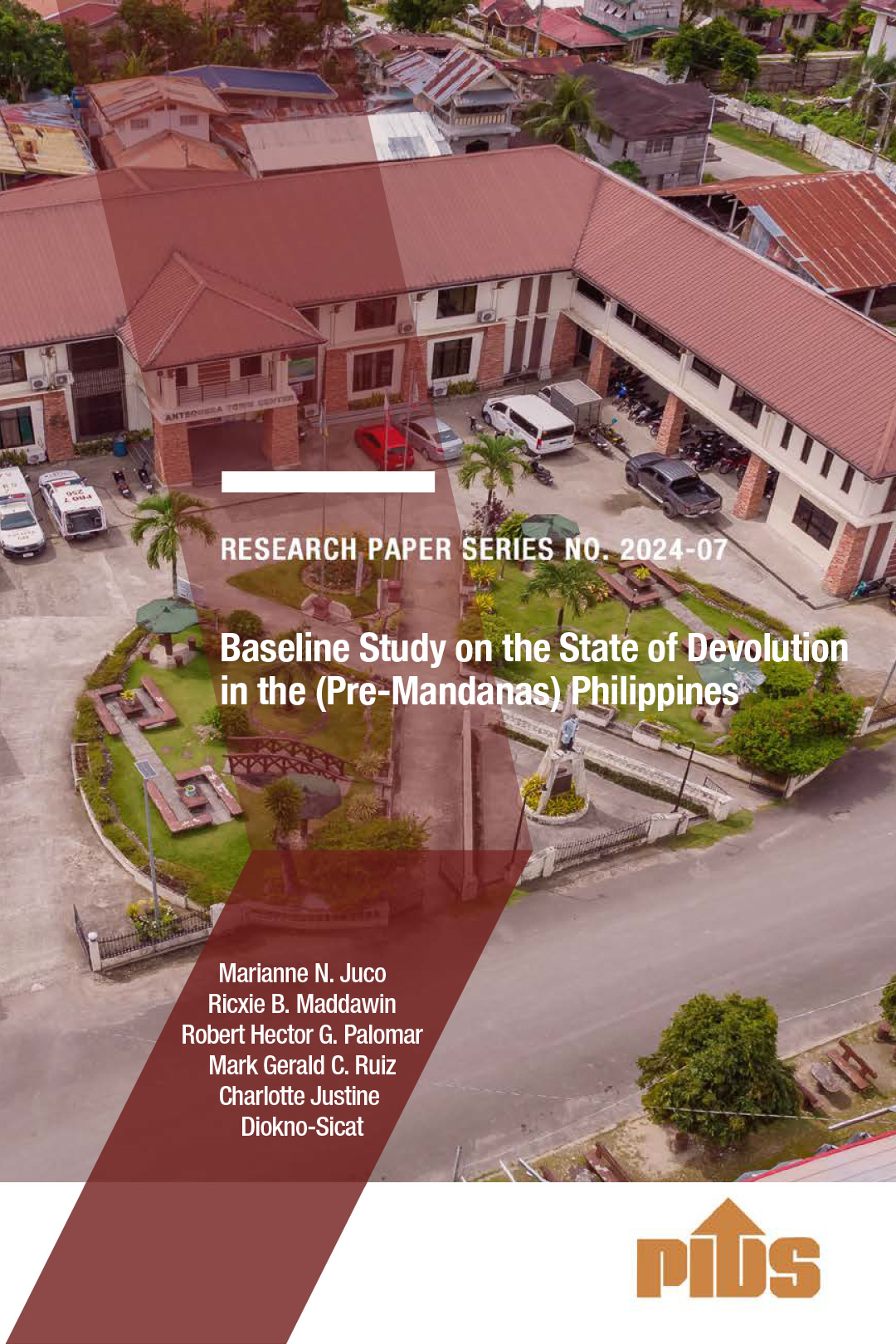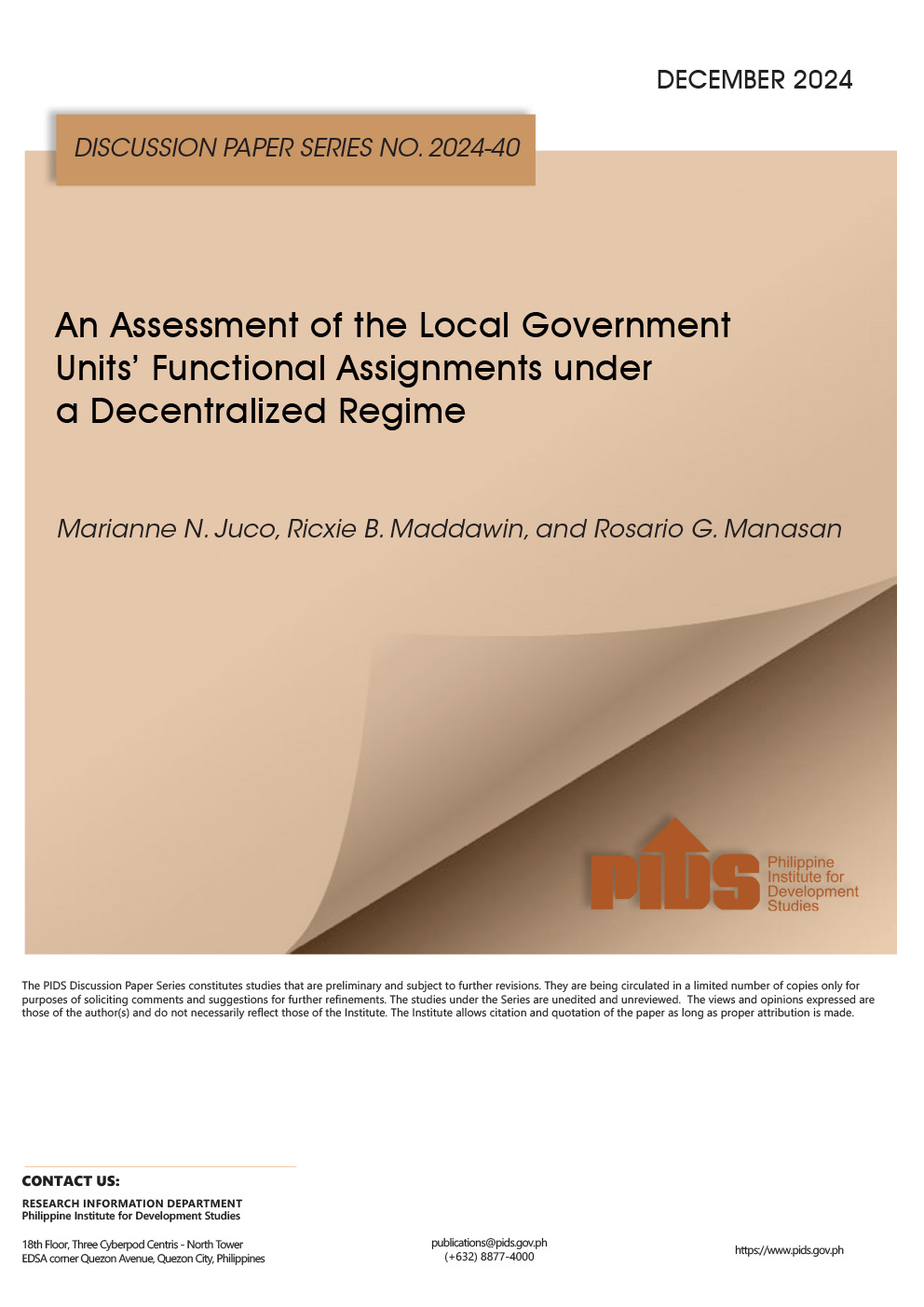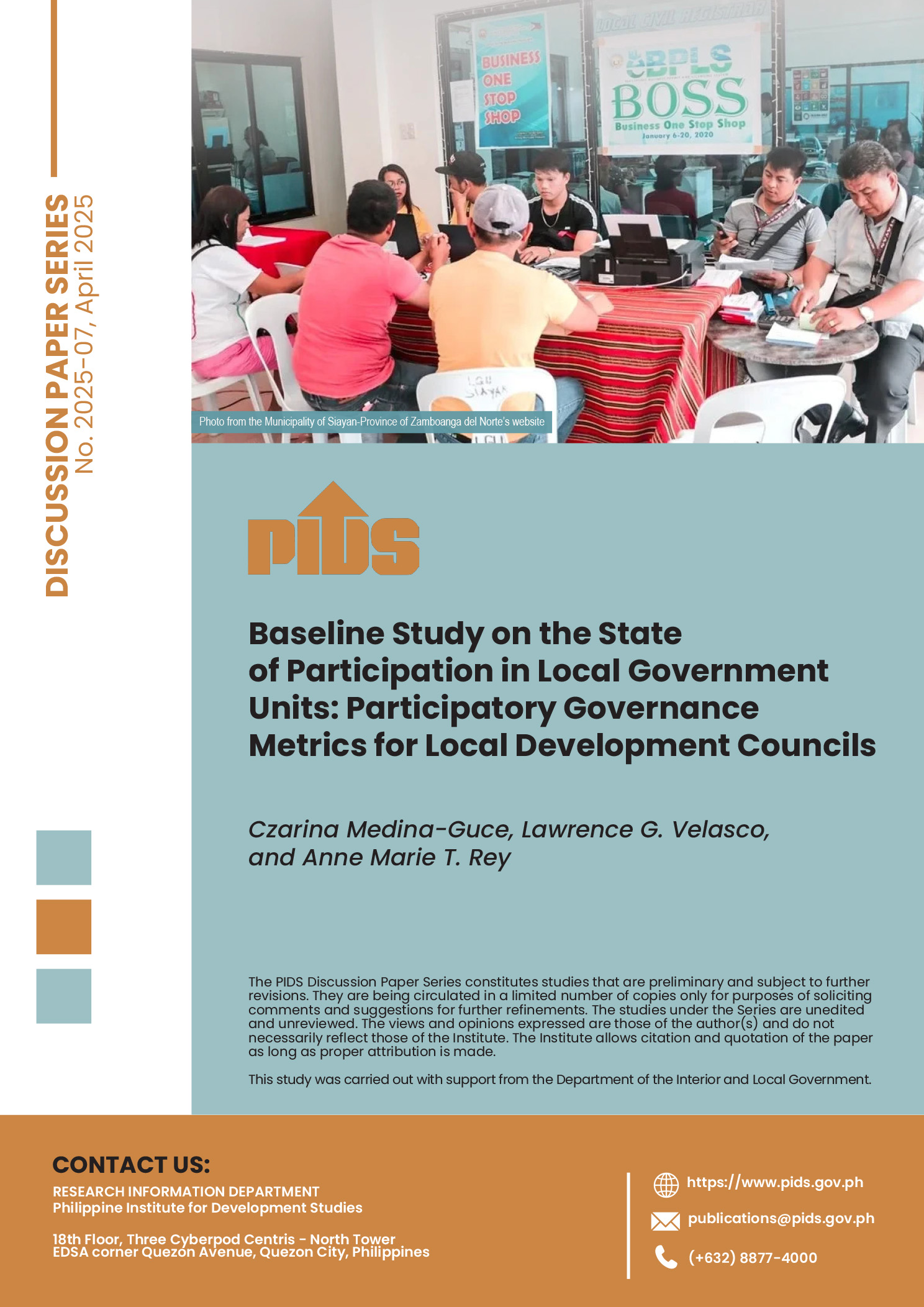
“There is no single best expenditure assignment in a federal setup. The same is true with tax assignment,” said Philippine Institute for Development Studies (PIDS) fiscal expert and Senior Research Fellow Rosario Manasan during the forum titled “Why pursue Federalism? Why not just amend the Local Government Code?” held at Congress recently. The forum was jointly organized by PIDS and the Congressional Planning and Budget Research Department of the House of Representatives.
Manasan stressed this in response to fiscal issues that may arise should the government decide to adopt a federal system of government.
According to her, it is “critical that the expenditure assignment, tax assignment and intergovernmental transfers are designed in an internally consistent and coherent manner to provide subnational governments the right incentives to deliver public services efficiently and effectively”, and be more accountable to their constituents.
‘’It is important to ensure utmost clarity in the assignment of functional responsibilities to the different levels of government in order to establish clean lines of accountability. Also, ambiguity in expenditure assignment is likely to result in either duplication of efforts in service delivery or under provision of some services,” she said.
The fiscal expert explained that in a federal setup, “functions and competencies whose benefits are national in scope should be assigned to the federal government (e.g., national defense, foreign affairs, economic stabilization and macroeconomic management) and functions related to the preservation of internal common market (e.g., regulation of international and interstate trade/ commerce) while public services whose benefits are local in scope are best administered and financed by lower-level governments (e.g., basic education, health and social insurance).”
The same principle applies to tax assignment in different levels of government. Manasan explained that subnational governments should be given a significant degree of revenue autonomy to be able to raise their own income and be less dependent from the national government. “Again, as with the assignment of expenditure responsibilities, greater clarity in the distribution of taxing powers between the central government and subnational governments is critical,” she said.
Greater attention should also be given to the design of equalization transfers (otherwise, regional disparities may widen) and greater revenue autonomy for subnational governments should be secured (otherwise, local accountability may weaken), according to Manasan.
She cautioned that in many decentralized economies, a vertical fiscal gap is evident. A vertical fiscal gap results when the revenue capacity of subnational governments as a group falls short of their expenditure responsibilities. Such gaps have been attributed to one or some combination of the following reasons: inappropriate assignment of responsibilities, centralization of taxing powers, and subnational governments’ pursuit of wasteful tax competition policies. These issues, she noted, may be addressed through revenue-sharing arrangements whereby subnational governments are given a share in the taxes that are levied and collected by the federal government. The internal revenue allotment or IRA, which is the share of the local government units in the taxes collected by the Bureau of Internal Revenue (BIR), is an example of a revenue-sharing arrangement.
Since fiscal imbalances and disparities are present across regions due to uneven level of economic development, there should be intergovernmental or equalization transfers. Manasan said these are important in ensuring that the adoption of a federal system will not widen disparities in economic opportunities across regions. She said that equalization transfers should take into account the disparities in the revenue-raising capacity or revenue potential of LGUs in line with their expenditure needs.
Another fiscal feature discussed by Manansan is the subnational government borrowing, which she said is a “primary source of finance for local infrastructure that are critical in the delivery of local services”. However, it is important to set parameters (i.e., how much the subnational government can borrow? will the national government bail them out in case they fail to pay their debts?) in providing credit financing to lower tiers of government. She said that fiscal risks, which are usually associated to poor subnational debt policy and management, should be considered to avoid the experience of federal states in Latin American like Argentina and Brazil in the 1990s.
Meanwhile, Manasan urged proponents of federalism to include the following provisions in crafting the proposed federal constitution: federal governments shall not guarantee payment of regional government and local government debt, regional and local government shall borrow for the purpose of financing capital investments only (Golden Rule), legislature shall enact a Fiscal Responsibility Law, and legislature shall enact a law addressing bankruptcy policy and insolvency mechanisms for regional and local governments. ###
Manasan stressed this in response to fiscal issues that may arise should the government decide to adopt a federal system of government.
According to her, it is “critical that the expenditure assignment, tax assignment and intergovernmental transfers are designed in an internally consistent and coherent manner to provide subnational governments the right incentives to deliver public services efficiently and effectively”, and be more accountable to their constituents.
‘’It is important to ensure utmost clarity in the assignment of functional responsibilities to the different levels of government in order to establish clean lines of accountability. Also, ambiguity in expenditure assignment is likely to result in either duplication of efforts in service delivery or under provision of some services,” she said.
The fiscal expert explained that in a federal setup, “functions and competencies whose benefits are national in scope should be assigned to the federal government (e.g., national defense, foreign affairs, economic stabilization and macroeconomic management) and functions related to the preservation of internal common market (e.g., regulation of international and interstate trade/ commerce) while public services whose benefits are local in scope are best administered and financed by lower-level governments (e.g., basic education, health and social insurance).”
The same principle applies to tax assignment in different levels of government. Manasan explained that subnational governments should be given a significant degree of revenue autonomy to be able to raise their own income and be less dependent from the national government. “Again, as with the assignment of expenditure responsibilities, greater clarity in the distribution of taxing powers between the central government and subnational governments is critical,” she said.
Greater attention should also be given to the design of equalization transfers (otherwise, regional disparities may widen) and greater revenue autonomy for subnational governments should be secured (otherwise, local accountability may weaken), according to Manasan.
She cautioned that in many decentralized economies, a vertical fiscal gap is evident. A vertical fiscal gap results when the revenue capacity of subnational governments as a group falls short of their expenditure responsibilities. Such gaps have been attributed to one or some combination of the following reasons: inappropriate assignment of responsibilities, centralization of taxing powers, and subnational governments’ pursuit of wasteful tax competition policies. These issues, she noted, may be addressed through revenue-sharing arrangements whereby subnational governments are given a share in the taxes that are levied and collected by the federal government. The internal revenue allotment or IRA, which is the share of the local government units in the taxes collected by the Bureau of Internal Revenue (BIR), is an example of a revenue-sharing arrangement.
Since fiscal imbalances and disparities are present across regions due to uneven level of economic development, there should be intergovernmental or equalization transfers. Manasan said these are important in ensuring that the adoption of a federal system will not widen disparities in economic opportunities across regions. She said that equalization transfers should take into account the disparities in the revenue-raising capacity or revenue potential of LGUs in line with their expenditure needs.
Another fiscal feature discussed by Manansan is the subnational government borrowing, which she said is a “primary source of finance for local infrastructure that are critical in the delivery of local services”. However, it is important to set parameters (i.e., how much the subnational government can borrow? will the national government bail them out in case they fail to pay their debts?) in providing credit financing to lower tiers of government. She said that fiscal risks, which are usually associated to poor subnational debt policy and management, should be considered to avoid the experience of federal states in Latin American like Argentina and Brazil in the 1990s.
Meanwhile, Manasan urged proponents of federalism to include the following provisions in crafting the proposed federal constitution: federal governments shall not guarantee payment of regional government and local government debt, regional and local government shall borrow for the purpose of financing capital investments only (Golden Rule), legislature shall enact a Fiscal Responsibility Law, and legislature shall enact a law addressing bankruptcy policy and insolvency mechanisms for regional and local governments. ###












